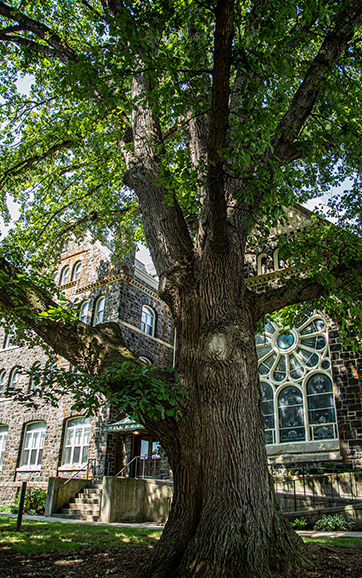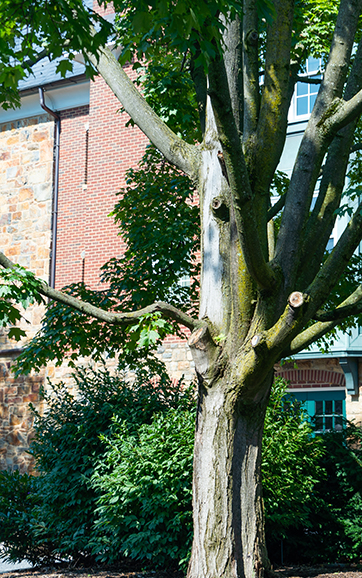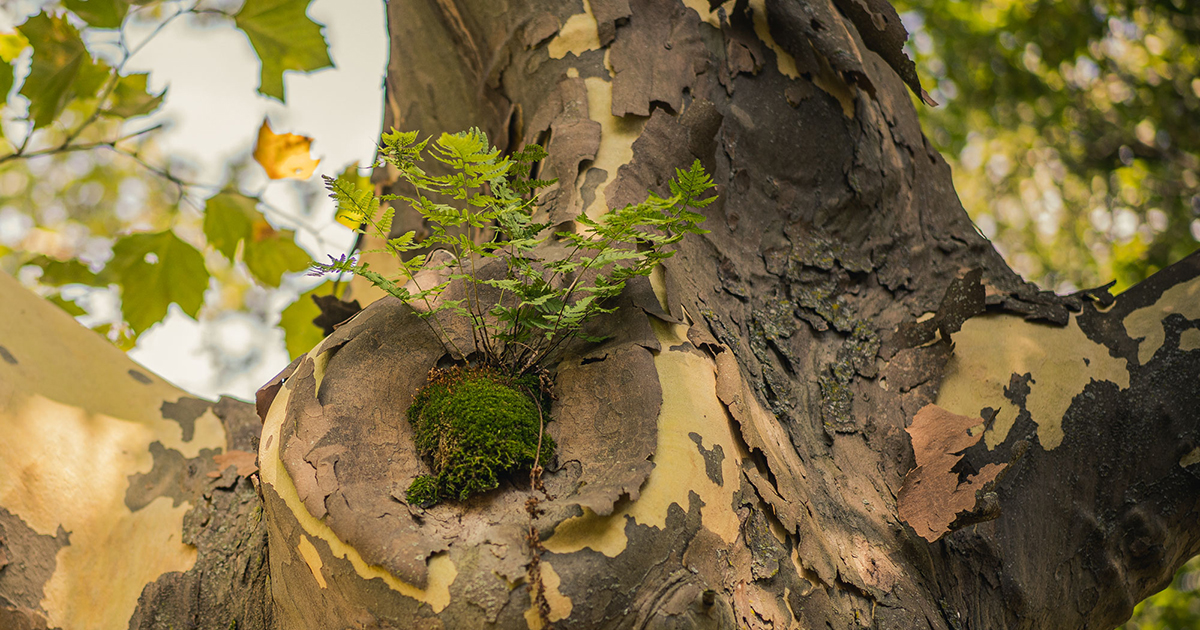
Mature trees like this sycamore outside Reeves Library provide habitats for many types of flora and fauna.
Our Storied Trees
Explore some of our campus’s most distinctive trees.
By Randy Haffling and Claire Kowalchik
Photographs by Bill Cardoni
Moravian University is home to more than 1,200 trees with an asset value totaling almost $9 million. They beautify the campus, soothe the soul, clean the air, and offer lessons to our students. Some are recently planted. One took root in the 18th century. Many are memorial trees. All are magnificent inhabitants of the landscape. Here, several of our most notable trees and the stories surrounding them. You can use their common names to locate them on the map in the university’s tree inventory (mrvn.co/treeinventorymap).
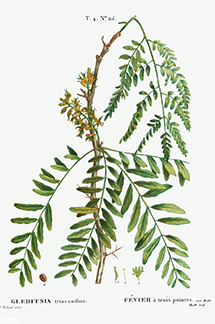
For Sally and Margaret
Honey Locusts
Gleditsia triacanthos
Enter the academic quad behind Memorial Hall, and you’ll find yourself under the light, feathery canopy of honey locusts with their pinnately compound leaves. Robert Snyder, an assistant to former Moravian president Raymond S. Haupert, who oversaw nearly every position at the college, had a passion for trees. He donated more than a dozen to Moravian, including the two honey locusts behind Memorial Hall, which he planted for his daughters, Margaret and Sally. Six additional honey locusts grace the quad. The tree is native to Pennsylvania, and according to the Arbor Day Foundation, it derives its name from the sweet honeylike liquid in its pods.
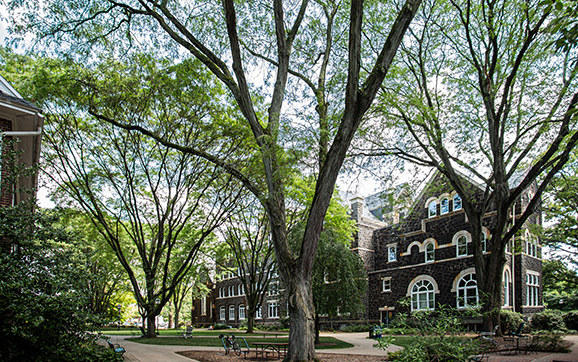
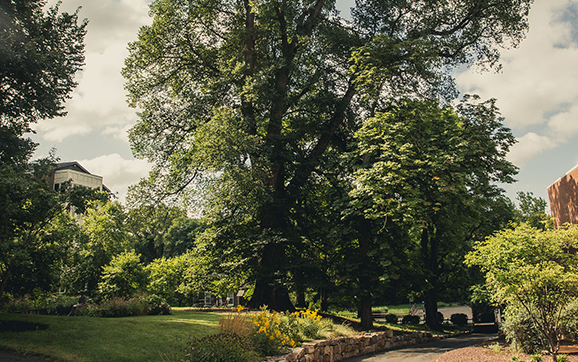
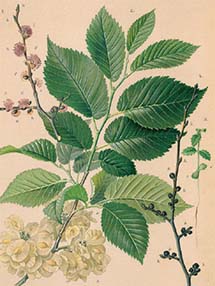
Our Champion
English Elm (National Champion)
Ulmus procera
It may be older than Moravian itself. This heritage tree, located behind the Brethren’s House on South Campus, is the oldest known English elm in the country, earning it National Champion status. Thorough research has yet to uncover when this tree was planted, but experts estimate it to be 250 years ago or more. We’d need to fell the tree and count its rings to learn its exact age. In 2015, lightning protection was installed on the elm to help ensure its health and longevity.
English elms dominated England’s landscape until they were ravaged by Dutch elm disease. Despite their common name, they are not native to England and are believed to have been introduced by farmers who emigrated to England during the Bronze Age.
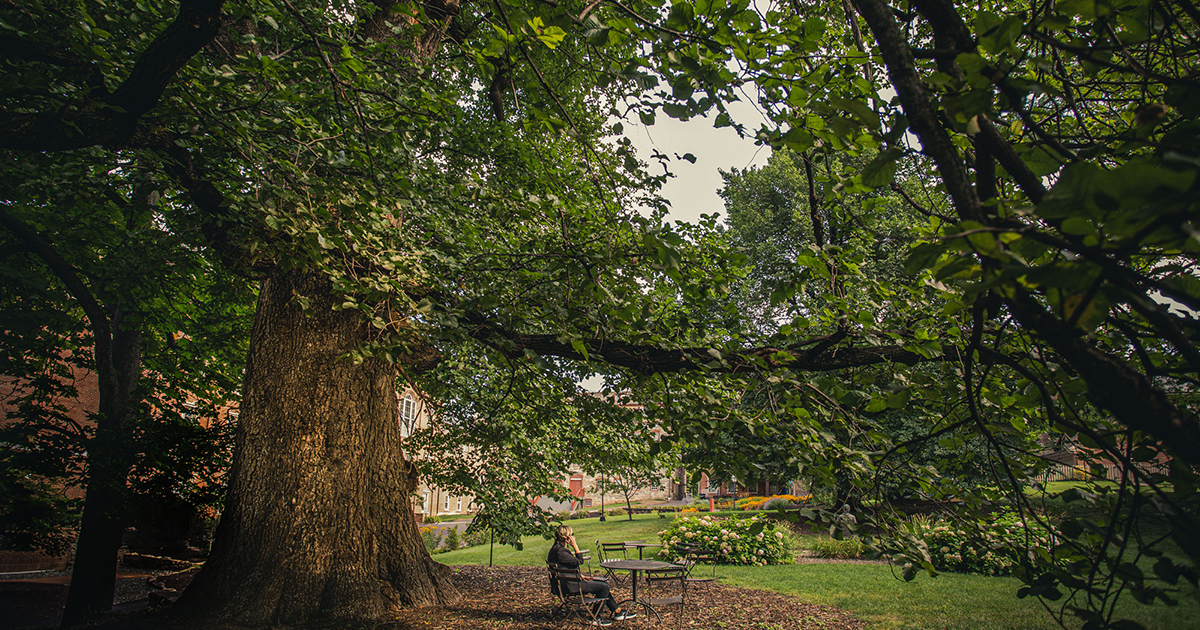
Our National Champion English elm Ulmus procera
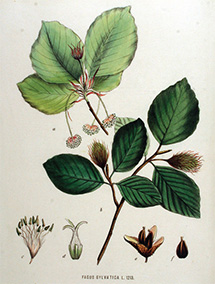
Initialed
Copper Beech
Fagus sylvatica
In front of the mighty white oak outside Borhek Chapel stands one of two copper beeches donated to Moravian in 1920 by J. Taylor Hamilton, president of the college from 1918 to 1928, who held a keen interest in Moravian’s tree landscape. The beech gets its common name from the copper sheen of its leaves. Its smooth, thin bark served as an invitation for students to carve their initials in the tree. That mischief was stopped decades ago, but you can see several of those carvings today.
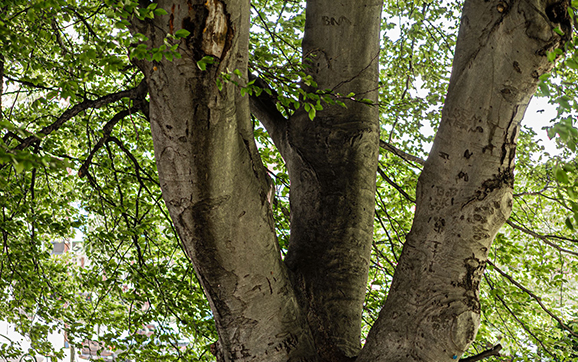
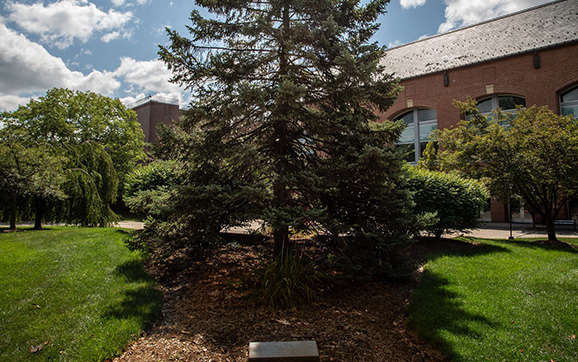
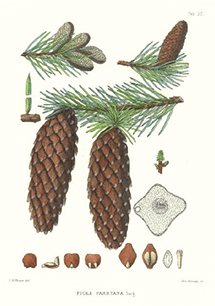
9/11 Memorial
Colorado Blue Spruce
Picea pungens
As you’re headed to the HUB, stop at the southeast corner of West Locust and Monocacy Streets. There you will find the blue spruce donated in 2002 by the Moravian University Sustainability Committee in memory of those who died on 9/11.
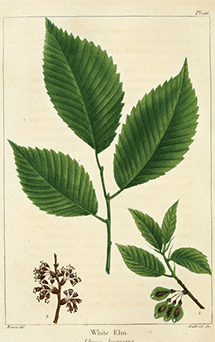
Return of the Native
American Elm
Ulmus americana
The American elm was the dominant street and shade tree across the eastern and central portions of the United States until Dutch elm disease broke out in Ohio in 1930 and destroyed much of the population of this magnificent, stately tree. In 2012, in honor of Earth Day, Moravian University’s Sustainability Committee donated an American elm to the campus. You’ll find the young tree on Laurel Street across from the Collier Hall of Science, and you’ll be happy to know that it’s thriving.
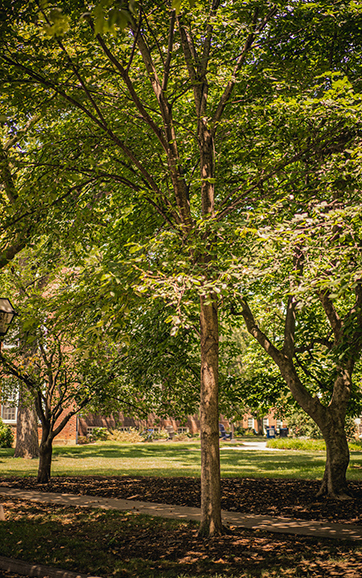
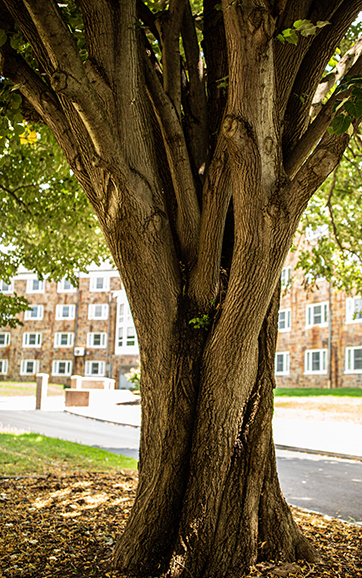
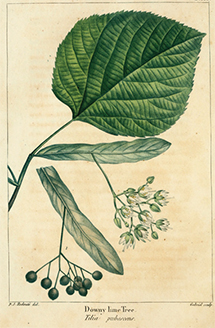
Symbol of the Czech Republic
American Linden
Tilia americana
If you stroll past the health center on Laurel Street and make an immediate right onto the service road into a residential portion of campus, you will come to a magnificent linden tree. The linden holds a significant place in the history of the Moravian church. As Craig Atwood, professor of Moravian theology tells, in 1457, the church (then the Unitas Fratrum) formed in the village of Kunwald, which is now part of the Czech Republic. Members of this community planted a linden tree as a sign of hope that they would endure. That linden had three trunks, which symbolized faith, hope, and love. Though the tree was struck by lightning about 50 years ago, it survives today, and some of the damaged wood was used to make a wooden chalice, which resides at the Moravian Theological Seminary.
Our heritage linden near the health center was designated for removal to make room for student housing, but Moravian’s president at that time, Ervin J. Rokke, insisted the tree be saved.
In the spring of 2018, to celebrate the 100th anniversary of the Czech Republic, 1,000 linden trees—the national emblem of the Czech Republic—were planted worldwide as part of the Trees of Liberty program. The first of 10 trees earmarked for the United States was planted in the garden outside the Moravian Theological Seminary during a ceremony led by Peter Sís, a Caldecott Medal–winning children’s book author and illustrator who was born in Moravia and served as the American representative for the Trees of Liberty program. “As we plant this tree, we hope for the future of a free and independent Czech Republic,” said Sís.
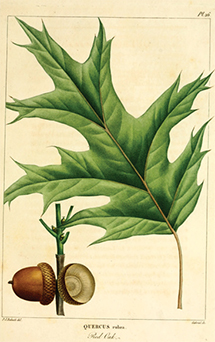
The Beauties of Colonial
Northern Red Oaks
Quercus rubra
More people pass by the majestic red oaks outside Colonial Hall than any other tree on campus. When Colonial Hall was built in 1929, only one tree was planted on the front lawn. In 1947, Paul Cunningham, superintendent of buildings and grounds, sought to change that and planted red oaks across the lawn facing Main Street. Red oaks are native to the United States.
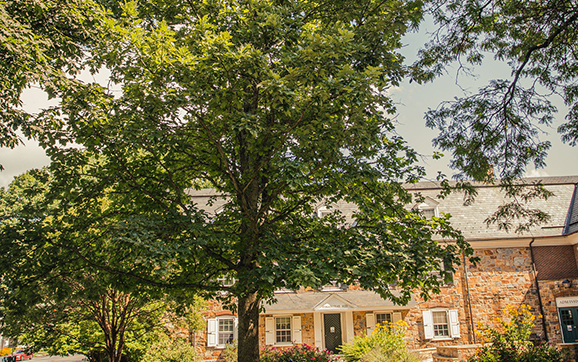
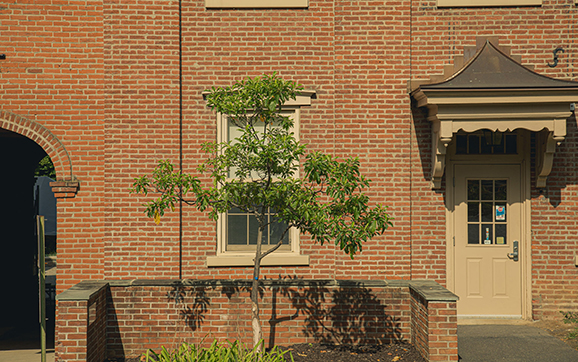
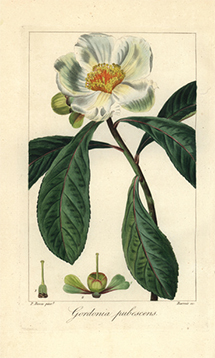
A Rare Find
Franklin Tree
Franklinia alatamaha
Outside Clewell Dining Hall on South Campus, you’ll find a small tree with a big history. In October 1765, Philadelphia botanists John and William Bartram traveled to the British colony of Georgia, where they discovered an uncatalogued tree species growing wild along the Alatamaha River. In 1777, during a plant-collecting expedition, William revisited the location of this tree and brought seeds back to Philadelphia for propagation.
He assigned the small tree the genus Franklinia for Benjamin Franklin, who was a great friend of his father, and species alatamaha for the river where he and his father first discovered the tree. A few years later, William returned to the discovery site but could not find one Franklin tree growing there. Subsequently, the tree could not be found growing anywhere in the wild, and the reasons for its extinction are unknown. All of the Franklin trees propagated today are descendants of seeds collected by the Bartrams.
Our Franklin tree was donated by the Moravian University Sustainability Committee in 2011 to honor Earth Day.
A note on Ben in Bethlehem: Benjamin Franklin visited Bethlehem in 1755 and was very impressed by the Moravians. During the Revolutionary War, he returned to explore the use of Brethren’s House as a hospital for wounded soldiers, which it would later become.
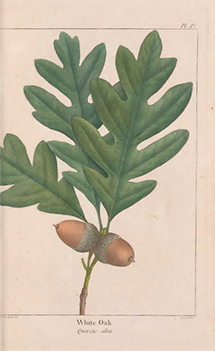
The Comenius Sentinel
White Oak
Quercus alba
This heritage tree grew up side by side with Comenius Hall and towers in front of Borhek Chapel. It was planted in 1892, the year Comenius Hall was dedicated. Strong, noble, and magnificent, it ranks second to our National Champion English elm in age and stature.
Photo credit (right): Katie Creighton
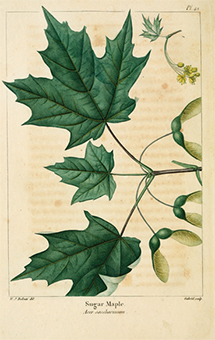
For John Updike
Sugar Maple
Acer saccharum
Just to the right of the back entrance to Colonial Hall stands a sugar maple planted in 1982 in honor of novelist John Updike, winner of multiple awards (including two Pulitzers) who twice spoke on campus. Updike grew up in Shillington, Pennsylvania, outside of Reading. At his boyhood home, his parents planted a dogwood tree the year after he was born. Believing it to be the same age as he, Updike felt a kinship with that dogwood, and as an adult, he penned the autobiographical essay “The Dogwood Tree: A Boyhood.” In it he writes: “When I was born, my parents and my mother’s parents planted a dogwood tree in the side yard of the large white house in which we lived throughout my boyhood. This tree...was, in a sense, me.”
Inside the back door of Colonial and on the wall to the left is a photo of the sugar maple with these words inscribed on the plate beneath the image: “This tree was planted in the presence of John Updike on the occasion of his visit to Moravian College on March 12 and 13, 1982.” Unfortunately, Updike’s sugar maple at Moravian has begun to struggle in the warmer temperatures resulting from climate change. Sugar maples are no longer suited to our growing zones. They do best in cooler New England states.
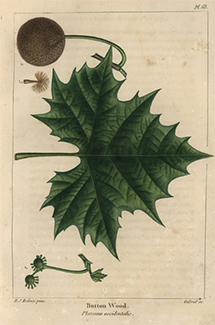
Monocacy Street
American Sycamore
Platanus occidentalis
Stand at the 1742 emblem on Laurel Street and look into the academic quad. You’ll see a neat row of sycamore trees stretching north to Elizabeth Avenue. Monocacy Street once ran right through campus, and these sycamores stood sentinel at its side. Today, Monocacy runs north from the edge of campus at Elizabeth and south from the HUB.
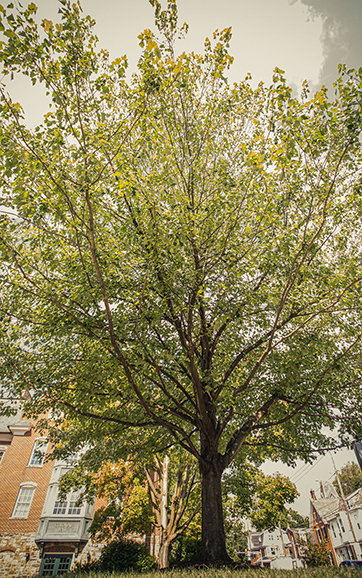
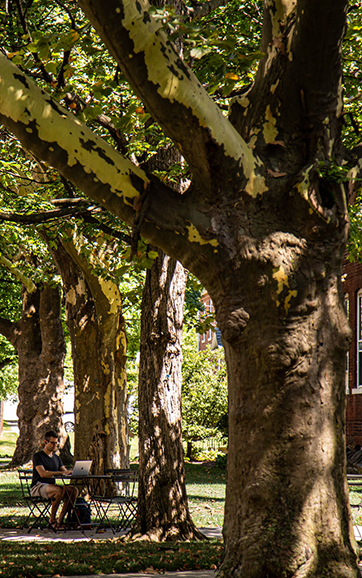
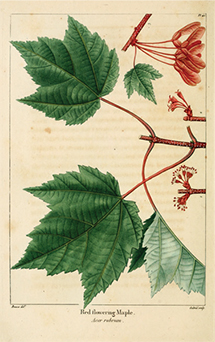
Honoring Priscilla Payne Hurd
Red Maple
Acer rubrum
The red maple at the entrance to the parking lot behind Colonial Hall was given by former Moravian president Christopher M. Thomforde and the Facilities Management, Planning and Construction Department in 2009 in honor of Priscilla Payne Hurd, a generous benefactor. Due to her generosity and leadership, Moravian’s South Campus is named the Priscilla Payne Hurd Campus. She created the Priscilla Payne Hurd Center for Music and Art and the Frank E. and Seba B. Payne Gallery, provided financial leadership for constructing the Priscilla Payne Hurd Academic Complex, and established the Priscilla Payne Hurd Chair in the Arts and Humanities and the Ervin J. Rokke Endowment for Student-Faculty Research.
Hurd was appointed to the Moravian College Board of Trustees in 1974 and became its first female chair in 1999. Under her leadership, Moravian developed innovative curricular and cocurricular programs and saw unprecedented growth of its student body.
History According to an Elm Tree
Moravian's English elm has stood behind Brethren's House for roughly 250 years, possibly longer, making it the oldest English elm in the United States. It has "witnessed" a huge chunk of the history of Bethlehem and Moravian. The illustration of its imagined rings here highlights some of the key events that occurred near and around the tree during its lifetime.
—Nancy Rutman '84
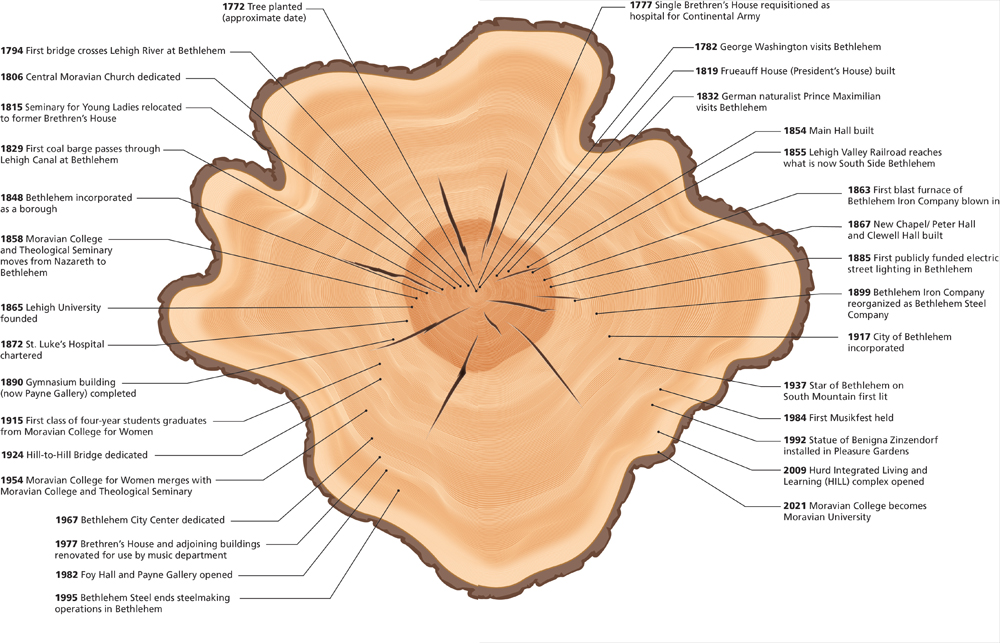
Illustration by Diego Bervejillo
Rooted in the University
Discover the contribution our trees make to community and their connections across campus.
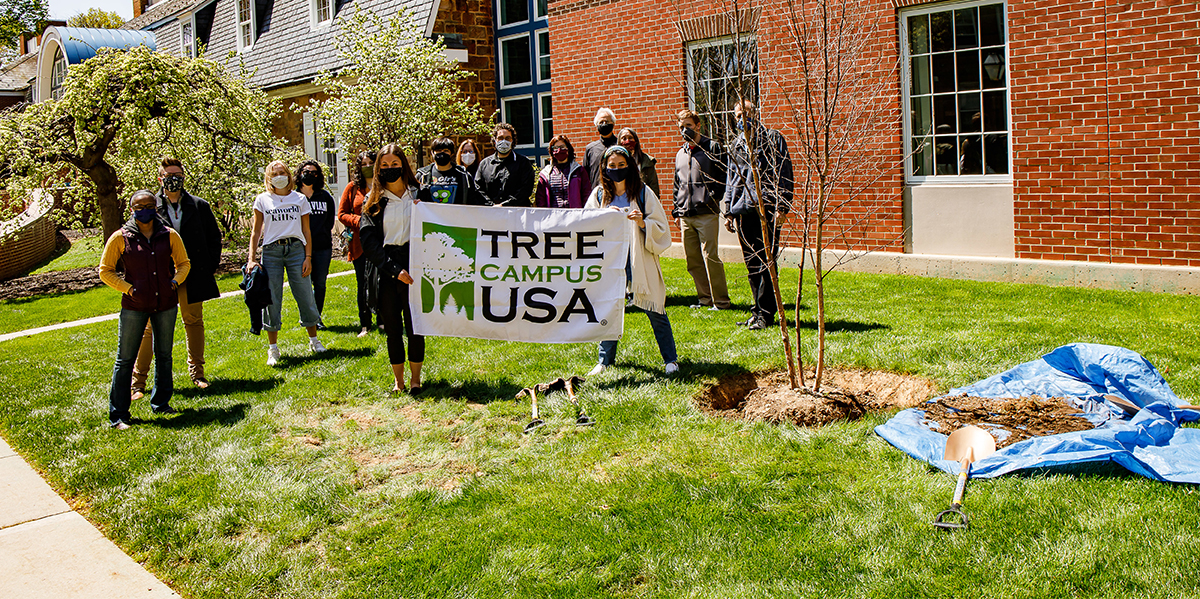
Every Arbor Day, a tree is planted on Moravian’s campus.
Lessons from Trees
Biology faculty take their students to the classroom of the outdoors. In the ecology course taught by Daniel Proud, assistant professor of biology, students engage in a variety of hands-on, field-based activities. Every fall, students spend an afternoon with Bartlett Tree Experts of Emmaus, Pennsylvania, who introduce them to arboriculture, guide them through the process of creating the campus tree inventory, and teach them how to assess tree health. In addition, Randy Haffling, assistant director of grounds and logistics, meets with students to explain the importance of maintaining healthy soil, as well as the many factors involved in managing the campus grounds. The aim of these hands-on, engaging, field-based learning experiences is to encourage students to connect with the natural world and to inspire a passion for environmental stewardship.
Natasha Woods, assistant professor of biology, has designed a lab for her environmental science class that assesses whether carbon dioxide sequestration by the trees on campus offsets carbon dioxide emissions from vehicles driven to campus. To calculate carbon dioxide capture, the students used the tree inventory to identify the species and age of the trees they were including in their study. They measured tree height and the diameter of the tree at breast height. They then applied formulas to this data to calculate the weight of carbon dioxide sequestered in each tree and divided that number by the tree’s age to determine the amount of carbon dioxide captured per year by each tree. The following week, students gathered the make and model of the cars on North Campus and used a given formula to calculate the average amount of carbon each car would emit in a year.
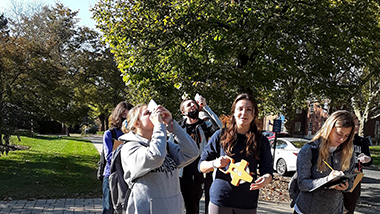
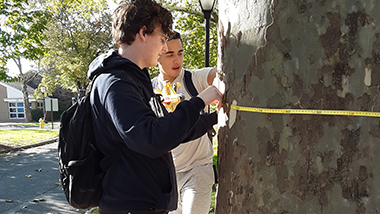
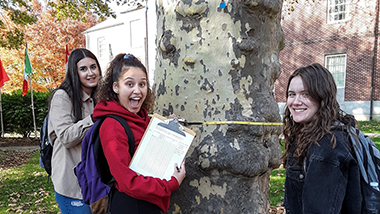
Above: Students in environmental science measure the height and diameter of trees—data needed to calculate the amount of carbon Moravian’s trees capture.
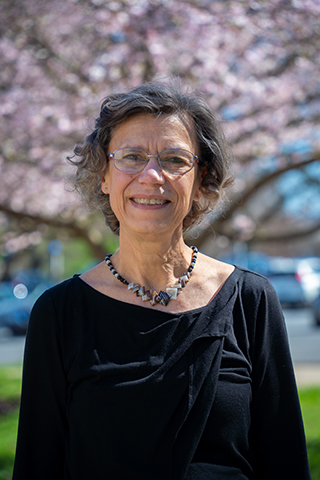
Eva Leeds, professor of economics, and her husband,
Michael, established a tree fund to help maintain the
beauty of Moravian’s campus.
Their conclusion: “Collectively, we are putting out many more metric tons of CO2 into the atmosphere than we are offsetting with our trees.”
Some studies show that an individual would need to plant between 725 to 1,000 trees annually to offset the CO2 emissions from their vehicle. “The students learned that planting more trees alone will not offset vehicle annual CO2 emissions,” says Woods. Every individual has a role to play in being more sustainable in their everyday lives to offset their carbon footprint.
Tree Inventory
Frank Kuserk, professor emeritus of biology, pushed for an inventory of Moravian’s trees, and in 2013, Moravian University’s Sustainability Committee, the university’s Facilities Management, Planning, and Construction (FMPC) department, and United Student Government funded the tree inventory. Partnering with Bartlett Tree Experts, Moravian University’s more than 1,200 trees were tagged with an identification number and included on an electronic map, allowing students, faculty, staff, and community members to view the trees’ common name, genus and species, location, age class (young, semimature, mature, overmature), diameter at breast height, and overall health. Information is also included about our heritage trees and memorial trees. Randy Haffling served as the chair of the project and continues to coordinate the tree inventory through his work with FMPC and the sustainability committee. You can view the tree inventory map at mrvn.co/treeinventorymap.
Tree Campus Higher Education USA
Tree Campus Higher Education USA, a national program launched in 2008 by the Arbor Day Foundation, honors colleges and universities and their leaders for promoting healthy trees and engaging the campus in the spirit of conservation. Moravian University has been recognized as a Tree Campus Higher Education USA since 2015 for meeting five core standards for sustainable campus forestry: the establishment of a tree advisory committee, evidence of a campus tree-care plan, dedicated annual expenditures for its campus tree program, an Arbor Day observance, and the sponsorship of student service-learning projects. We are among 411 recognized campuses, roughly 10 percent of all institutions of higher learning.
A New Tree Fund
To support Moravian’s spirit of conservation and the care and preservation of the trees on our campus, economics professor Eva Marikova Leeds and her husband, Michael, endowed the Moravian University Tree Fund in December 2021. “I love nature, and I marvel at the variety and size of the many trees we have here on campus,” says Eva. “Moravian is not unique in this regard, of course, but I would like the university to be an oasis of peace and beauty for generations to come.” You, too, can help preserve the peace and beauty of the campus by enriching the Moravian University Tree Fund with your gift at mrvn.co/treefund.
Caring for Moravian’s Trees
Walk the campus with Randy Haffling as he points out plants and trees, describes their characteristics, and tells their stories.
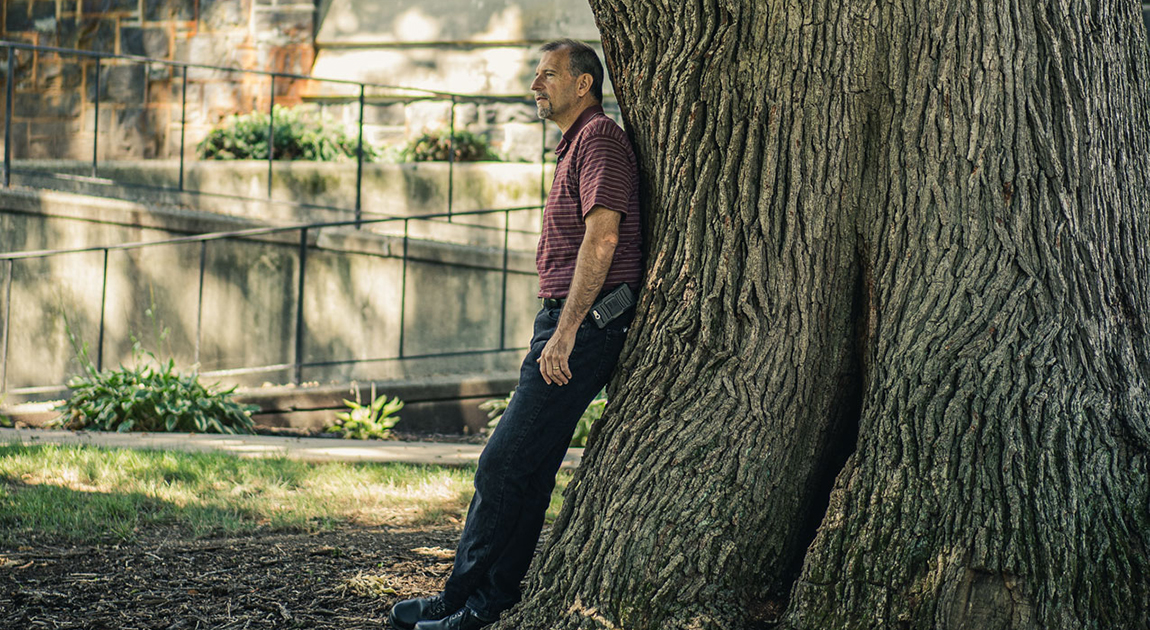
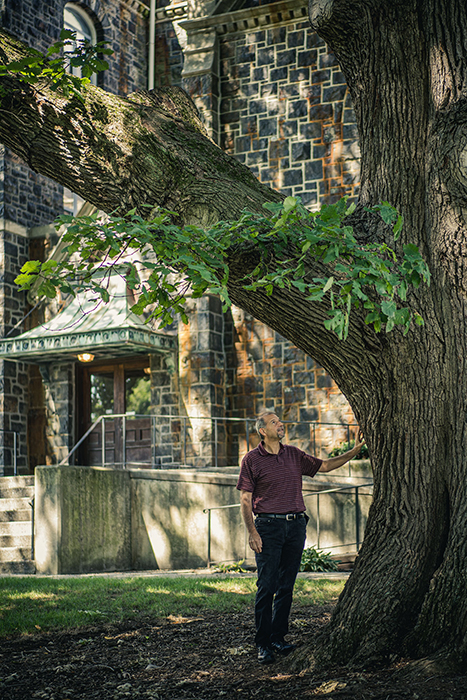
Among other responsibilities, Randy Haffling, assistant director of grounds and logistics, oversees the care of Moravian University’s trees. Haffling (pictured at right with the white oak in front of Borhek Chapel) has degrees in ornamental horticulture and environmental design and holds a certificate in historic preservation and conservation. He owned a landscape design and maintenance business and served as a senior landscape designer for several design and build companies before coming to Moravian. Perhaps what most qualifies Haffling for his work is his deep respect and love of the environment, which is palpable anytime you walk the campus with him as he points out plants and trees, describes their characteristics, and tells their stories. Haffling explains the strategies his team employs to maintain the health of our trees:
- Organic fertilizer is incorporated into the soil around the trees to promote a healthy environment.
- Areas around the trees are generally mulched to protect the roots from compaction and allow proper infiltration of water and oxygen to the roots.
- Insect control, disease prevention, and fertilization treatments are injected into trees using an Arborjet Tree I.V. system, which delivers the solution directly into the tree for immediate effect and efficiency. This eliminates the waste that occurs with diffuse topical spraying and prevents any solution from hitting cars and buildings. Treatments used are primarily organic and are applied on an as-needed basis or as a preventive measure, following Integrated Pest Management (IPM) practices. To learn about IPM, visit mrvn.co/ipm.
- Trees are continually evaluated and maintained to prevent harm to people and damage to buildings through the removal of dead limbs and trimming for clearance around lights, buildings, and over travel ways.

